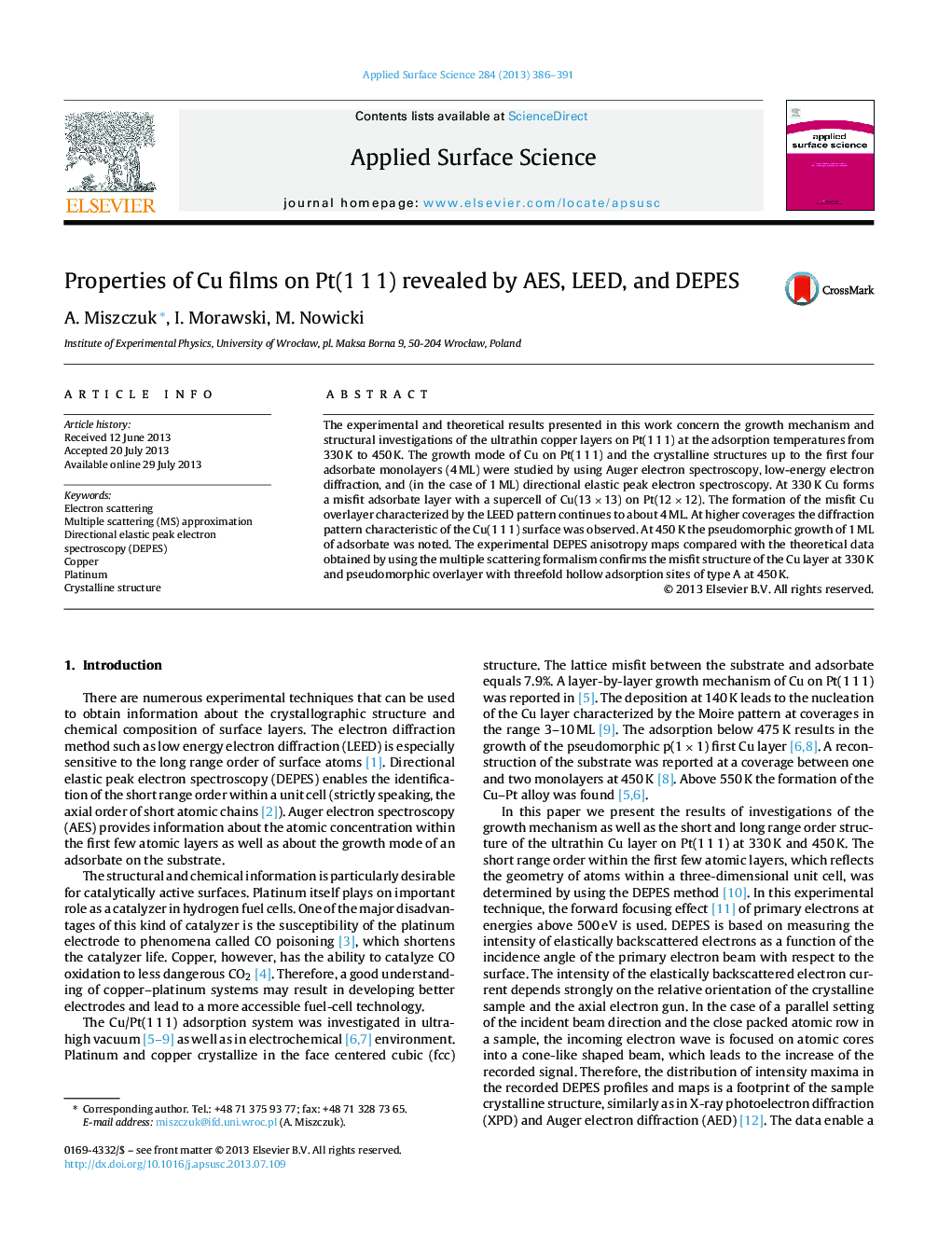| Article ID | Journal | Published Year | Pages | File Type |
|---|---|---|---|---|
| 5352620 | Applied Surface Science | 2013 | 6 Pages |
Abstract
The experimental and theoretical results presented in this work concern the growth mechanism and structural investigations of the ultrathin copper layers on Pt(1Â 1Â 1) at the adsorption temperatures from 330Â K to 450Â K. The growth mode of Cu on Pt(1Â 1Â 1) and the crystalline structures up to the first four adsorbate monolayers (4Â ML) were studied by using Auger electron spectroscopy, low-energy electron diffraction, and (in the case of 1Â ML) directional elastic peak electron spectroscopy. At 330Â K Cu forms a misfit adsorbate layer with a supercell of Cu(13Â ÃÂ 13) on Pt(12Â ÃÂ 12). The formation of the misfit Cu overlayer characterized by the LEED pattern continues to about 4Â ML. At higher coverages the diffraction pattern characteristic of the Cu(1Â 1Â 1) surface was observed. At 450Â K the pseudomorphic growth of 1Â ML of adsorbate was noted. The experimental DEPES anisotropy maps compared with the theoretical data obtained by using the multiple scattering formalism confirms the misfit structure of the Cu layer at 330Â K and pseudomorphic overlayer with threefold hollow adsorption sites of type A at 450Â K.
Keywords
Related Topics
Physical Sciences and Engineering
Chemistry
Physical and Theoretical Chemistry
Authors
A. Miszczuk, I. Morawski, M. Nowicki,
